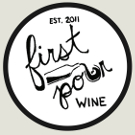Whether you’re out at the wine shop, at a wine tasting party, or just have multiple bottles open at a gathering, the order that wines are tasted in can have a big impact on flavor. There are so many wines though, how does one go about determining which order to try them in?
In general the rules are as follows:
- White before Red – This is important not only for the flavor of the wine, but also could offend your host in some cultures.
- Dry before Sweet – The sweetness will cause the drier wine to become to acidic.
- Light Body before Heavy Body – It’s harder to taste a Pinot Noir after a big Cabernet.
- Anything before Fortified – Fortified wines have high alcohol contents, and can burn out both the sense of smell and the palette.
- Sparkling First but after White / Red, Dry / Sweet – Generally speaking, this is the case, but it is dependent on color and sweetness.
- Young before Old – Age before beauty isn’t always the case with wine. In deep tastings, with a lot of bottles, nuances of old wines may be lost, but in general, go young before old.
The wine tasting order for some of the most common varietals on the market would be as follows [any sparkling wines will go at the start of the color]:
- Riesling [Dry]
- Pinot Grigio
- Sauvignon Blanc
- Gewürztraminer
- Chenin Blanc
- Viognier
- Chardonnay
- Rosé / Clariet
- Pinot Noir
- Sangiovese
- Tempranillo
- Grenache
- Zinfandel
- Merlot
- Shiraz / Syrah
- Cabernet Sauvignon
- Sweet [White before Red]
- Dessert Wines [non-fortified]
- Fortified Wines
Blends require some guesswork, but in general the largest grape by percentage will dictate the character of the wine.
